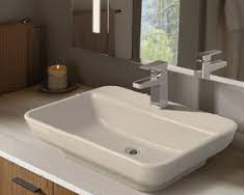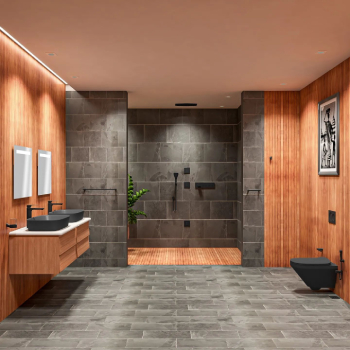Types of Kitchen Sink Faucets: A Complete Guide

The kitchen sink. Often overlooked, yet arguably the most frequented spot in any home. Meals begin there. They end there. We tend to overlook the importance of quality when it comes to kitchen fixtures. And honestly? That's a mistake many of us regret later.
A combination of design and style needs to be taken into consideration for a complete makeover. When it comes to sink designs, Kohler has made a reputation for offering stellar designs that stand out with a focus on form as well as functionality.
Moreover, when it comes to quality faucets, Kohler kitchen sink faucets have been making waves in the industry for decades now, especially in the modern kitchen sink space. Whether you are looking for conventional or corner kitchen sink ideas, the following guide will be helpful in every scenario.

1. Measure the Faucet Center
The first step involves understanding sink configuration. How many holes? What spacing between them? Most standard sinks feature either 1 or 3 holes, though some premium models might include 4 for additional accessories like soap dispensers or filtered water taps. The standard distance between holes (what industry professionals call "faucet centers") typically measures 4 or 8 inches. A measuring tape becomes one's best friend during this phase of selection. Many homeowners have ordered gorgeous fixtures only to discover an incompatibility with their existing setup. Quite a disappointing situation after anticipating that perfect kitchen upgrade!
Related Link: Faucet Frenzy: Finding the Perfect Type of Kitchen Faucet for Your Home

2. Measure for Spout Height
Spout height represents a critical measurement - particularly when dealing with a corner kitchen sink or when cabinetry hangs above the sink area. The proper approach: measure from the sink deck to any overhead cabinets, then subtract approximately 3 inches for comfortable clearance. This calculation provides the maximum acceptable spout height - a number worth recording before shopping begins.
For deeper sink designs (such as farmhouse styles that continue gaining popularity), taller spouts actually prove advantageous for easier filling of large pots and containers. Balance becomes everything in these decisions.

3. Measure for Spout Reach
Spout reach refers to the distance between the faucet and the sink basin. This measurement becomes especially significant with modern kitchen sink designs featuring multiple compartments or unique geometries.
For standard configurations, the spout should ideally reach near the basin center. For a corner kitchen sink, the spout must comfortably access all sections without causing splashing or leaving areas difficult to utilize.
Too short? Constant pot repositioning becomes necessary. Too long? Water splash can extend beyond the basin onto the countertops. Neither scenario proves ideal for daily kitchen activities.
After a careful consideration of the above points comes the selection of the type of kitchen faucet suitable for you. Here are the popular types to choose from.
Related Link: Refined Splendour: Selecting Exquisite Faucets for Your Dream Bathroom
Types of Kitchen Sink Faucets

Pull-Down Faucets
Arguably, the most popular choice in modern kitchens. These feature a high-arched spout with a spray head that pulls downward into the sink. The hose typically extends about 20-24 inches, though premium models sometimes offer more reach.
What makes them special? Versatility. Pull-downs excel at rinsing vegetables, filling tall pots, and cleaning sink corners. Their high arc provides generous clearance beneath—essential when washing bulky items.
Many homeowners choose these for their intuitive operation, though people with smaller sinks occasionally complain about splashing issues. Higher-quality models solve this with adjustable flow settings.

Pull-Out Faucets
Often confused with pull-downs, these have a distinctly different operation. Rather than pulling downward, the spray head extends directly toward the user. The design typically features a shorter spout height but offers excellent control.
Pull-outs work beautifully in kitchens with cabinet restrictions above the sink or where window placement limits clearance. Some models extend up to 30 inches—particularly useful in larger or divided sinks.
Interestingly, many professional organizers prefer pull-outs because the hose naturally returns to position without catching or drooping over time, a common complaint with cheaper pull-down models.

Bridge Faucets
Classical elegance is defined. Bridge faucets have a horizontal pipe that connects dual handles to a central spout. This exposed pipework creates a vintage aesthetic that pairs beautifully with farmhouse or traditional sink designs.
Unlike integrated units, bridge faucets visibly showcase their mechanical construction—a detail that design enthusiasts often appreciate. Most require three-hole sink configurations, though wall-mounted variations exist for specialized installations. These tend to lack pull-down features, though some modern interpretations incorporate retractable sprayers while maintaining their period-appropriate appearance.
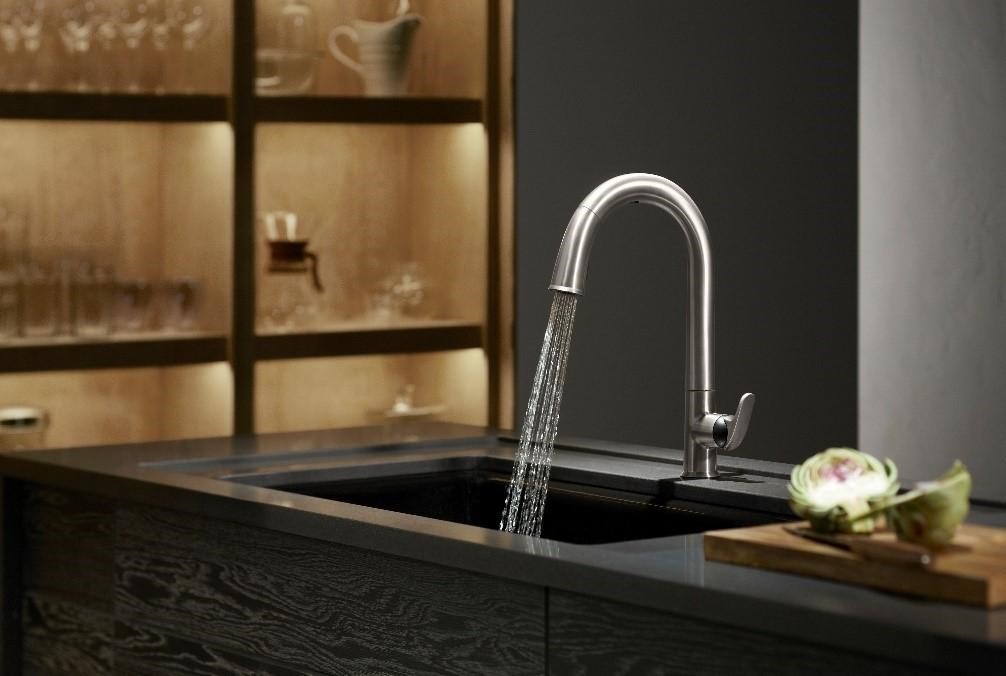
Single-Handle Faucets
Streamlined simplicity at its finest. These fixtures control both temperature and flow through one lever mechanism, typically mounted on top or to the side of the spout.
The minimalist design makes single-handle models perfect for contemporary kitchens where clean lines take priority. Their simplified installation (requiring just one hole) offers flexibility for sink replacement or updates. Temperature adjustment takes some getting used to—finding that perfect lukewarm setting sometimes requires subtle lever adjustments that vary between manufacturers.
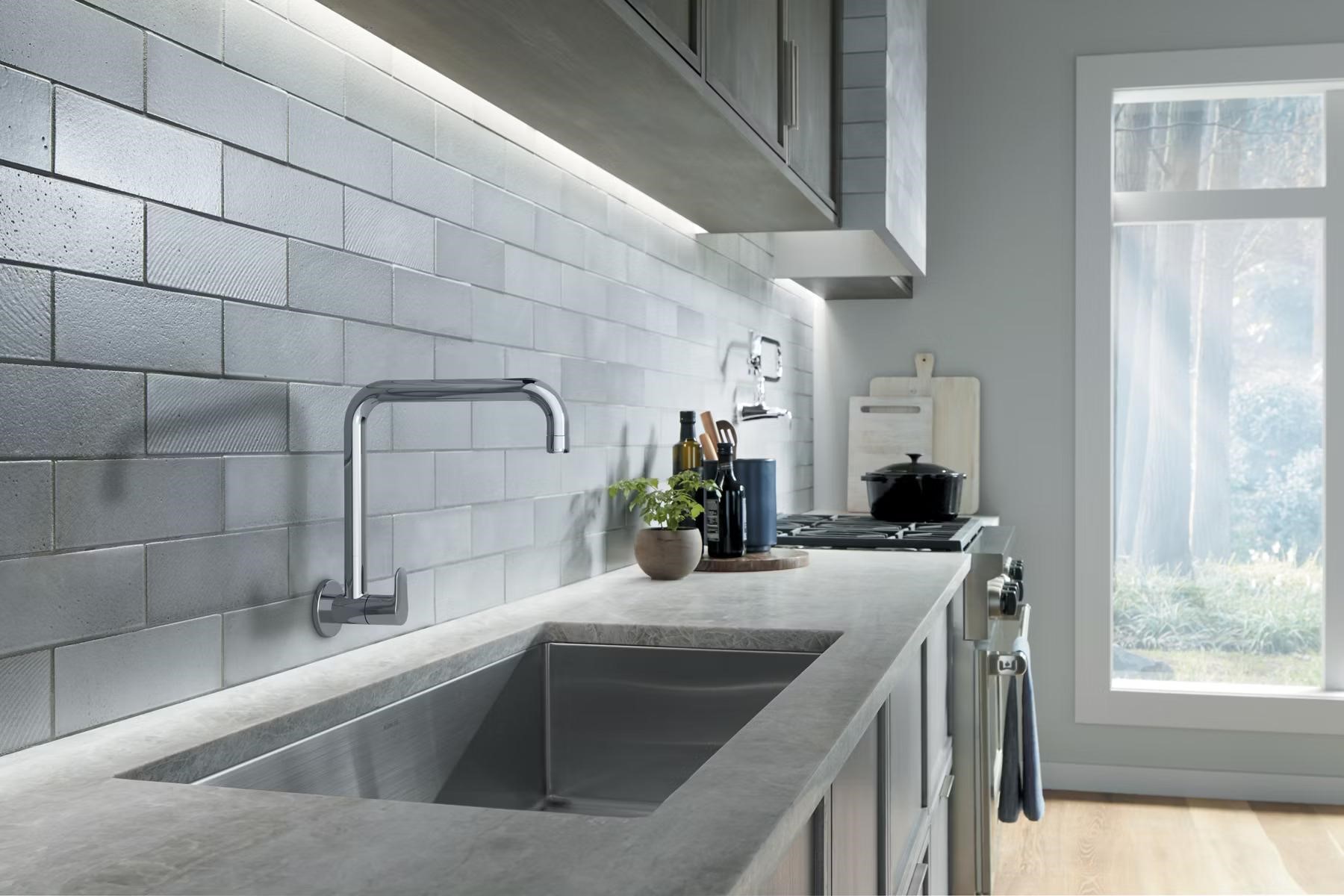
Dual-Handle Faucets
Traditional and precise. These classics feature separate controls for hot and cold water, allowing precise temperature regulation. The handles might be mounted on a shared base plate or positioned independently (widespread configuration). Many homeowners appreciate dual-handle designs for their familiarity and functionality when handling specific kitchen tasks. Want exactly 72° water for proofing bread dough? A dual-handle setup offers that level of control.
The trade-off? They require more cleaning attention where the handles meet the countertop—a minor but real consideration for maintenance-minded shoppers.
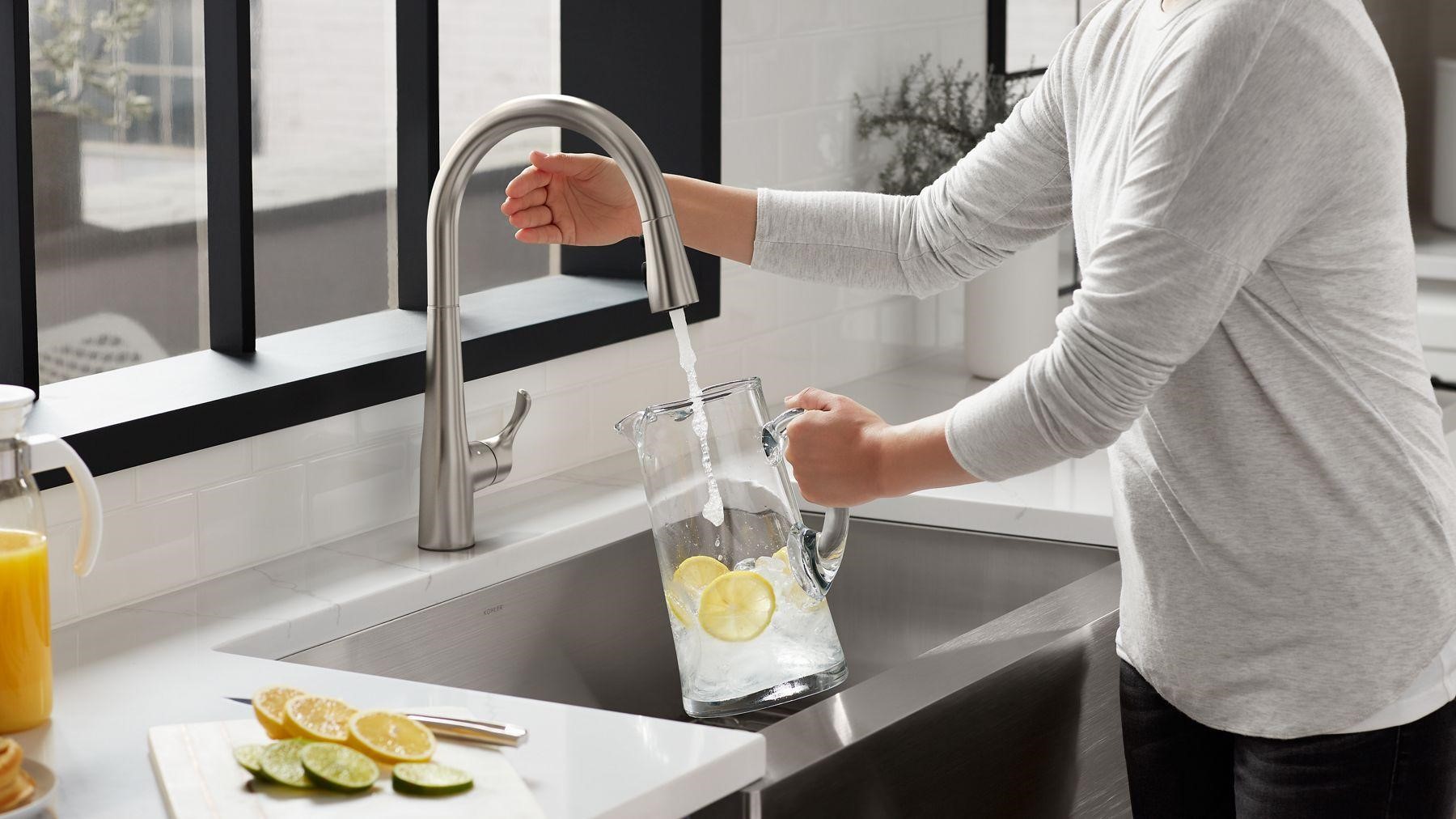
Touchless/Motion-Sensor Faucets
The technology-forward option. These modern marvels activate water flow through hand movements near embedded sensors—no contact required. Some even respond to voice commands or app controls.
Beyond their undeniable convenience during messy cooking tasks, touchless faucets offer significant hygiene benefits by eliminating contact with potentially contaminated handles. This feature alone drives many health-conscious buyers toward this category.
Battery life and sensor reliability vary dramatically between brands and price points—definitely an area where research pays dividends.
When selecting from these various types, consideration extends beyond mere appearances. Water efficiency ratings, handle ergonomics, finish durability, and compatibility with existing sink configurations all influence which faucet type ultimately deserves that prime position in your kitchen.
Most importantly, when it comes to making the right selection, Kohler kitchen sink faucets are cut above the rest, combining performance with precision to make a strong case for themselves. Next time you are out shopping for faucets, go bold, and go Kohler.
FAQs
What is the best shape for a sink?
Rounded edges are the most popular ones, whereas rectangular are known to maximise workspace in larger kitchens. However, for compact spaces, square and oval sinks are preferred.
How do you determine sink size?
You need to pay heed to the length, width, and depth of the existing sink space or the new one to determine the sink size to ensure the right fit.
What sink material is best?
Stainless steel is often the undisputed king when it comes to kitchen sink material. They combine visual appeal and durability to make them your best bet.



